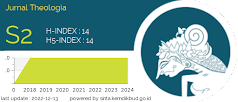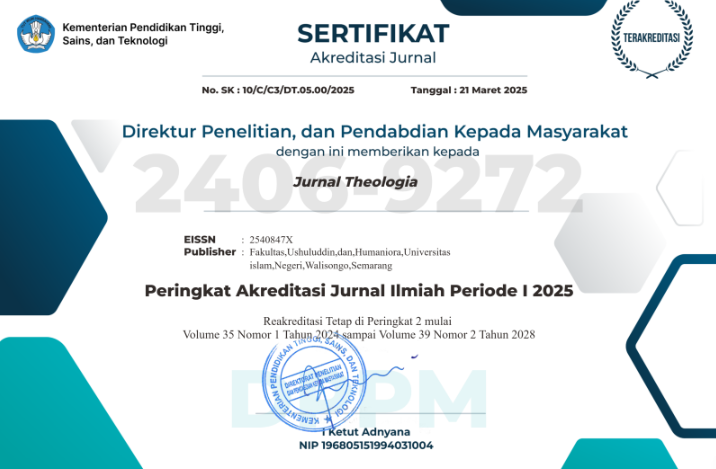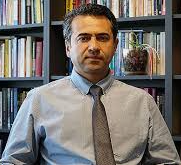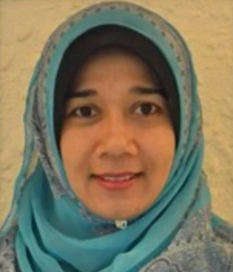Digital Media and Counter Narrative of Radicalism
DOI:
https://doi.org/10.21580/teo.2020.31.2.6762Keywords:
Counter-Narrative, Digital Media, Narrative Theory, RadicalismAbstract
This article aims to describe the meaning of narratives are used by digital media or online media to counter the narrative of radicalism. The research method used is discourse analysis to find the meaning in the text. The theoretical framework used is narrative theory to explain process audience can trust about a narrative because of the consistency and truth of narrative or story. Narratives are analyzed using a framework of identity prism theory. The identity prism describes that online media as a brand has a strategy to build and promote it is unique among other brands. The results of the study are Islami.co and Ruangobrol.id have different characteristics or uniqueness and segmentation to convey the counter-narratives to the public. The narratives are built is to fight or deconstruct the narratives of radicalism-terrorism as an effort to prevent radicalism and the recruitment of new members through the internet. The counter-narrative also has coherence and truth as important standards for the public to select and judge that the narrative is consistent and credible. In the digital age, digital media have an important role in the counter-narratives of radicalism. It’s because radical-terrorist groups using the internet and social media platforms to spread their thoughts and their actions.Downloads
References
Alarid, Maeghin. “Recruitment and Radicalization: The Role of Social Media and New Technology.” Impunity: Countering Illicit Power in War and Transition, 2016, 313–30.
Archetti, Cristina. “The Al Qaeda Narrative as a Brand.” In Understanding Terrorism in the Age of Global Media, 144–68. Springer, 2013.
Ashour, Omar. “Online De-Radicalization? Countering Violent Extremist Narratives: Message, Messenger and Media Strategy.” Perspectives on Terrorism 4, no. 6 (2010): 15–19.
Bakti, Agus Surya. Deradikalisasi Dunia Maya: Mencegah Simbiosis Terorisme Dan Media. Daulat Press, 2016.
BNPT. “Waspadai Aktivitas Terorisme Di Ruang Siber,” 2020. https://bnpt.go.id/waspadai-aktivitas-terorisme-di-ruang-siber-deputi-bidang-penindakan-dan-pembinaan-kemampuan-bnpt-sepakati-perjanjian-kerja-sama-dengan-direktorat-jenderal-aplikasi-informatika-kemkominfo.
Briggs, Rachel, and Sebastien Feve. “Review of Programs to Counter Narratives of Violent Extremism,” 2013.
Campbell, Heidi. When Religion Meets New Media. New York: Routledge, 2010.
Conway, Maura. “Determining the Role of the Internet in Violent Extremism and Terrorism: Six Suggestions for Progressing Research.” Studies in Conflict & Terrorism 40, no. 1 (2017): 77–98.
Eerten, Jan-Jaap van, Bertjan Doosje, Elly Konijn, B A de Graaf, and Mariëlle de Goede. “Developing a Social Media Response to Radicalization: The Role of Counter-Narratives in Prevention of Radicalization and de-Radicalization.” WODC, 2017.
Epafras, Leonard. “Religious E-Xpression among the Youths in the Indonesian Cyberspace,” 2016.
Ephraim, Philip Effiom. “Cristina Archetti, Understanding Terrorism in the Age of Global Media: A Communication Approach.” International Journal of Communication 9 (2015): 3.
Fairclough, Norman. Analysing Discourse: Textual Analysis for Social Research. New York: Routledge, 2003.
Ghifari, Iman Fauzi. “Radikalisme Di Internet.” Religious: Jurnal Studi Agama-Agama Dan Lintas Budaya 1, no. 2 (2017): 123–34.
Grossman, Michele. “Disenchantments: Counterterror Narratives and Conviviality.” Critical Studies on Terrorism 7, no. 3 (2014): 319–35.
Holbrook, Donald. “What Types of Media to Terrorists Collect?: An Analysis of Religious, Political and Ideological Publications Found in Terrorism Investigations in the UK.” ICCT Research Paper, 2017.
Huda, Achmad Zainal. “Melawan Radikalisme Melalui Kontra Narasi Online.” Journal of Terrorism Studies 1, no. 2 (2019): 1.
Hui, Jennifer Yang. “The Internet in Indonesia: Development and Impact of Radical Websites.” Studies in Conflict & Terrorism 33, no. 2 (2010): 171–91.
INFID (International NGO Forum on Indonesian Development). Urgensi Dan Strategi Efektif Pencegahan Ekstrimisme Di Indonesia. Jakarta: INFID, 2018.
Kapferer, J N. “Brand Identity Prism.” Strategic Brand Management, 2006, 154–55.
Kominfo. “Pemblokiran Dan Literasi Jadi Langkah Kominfo Cegah Terorisme Di Ruang Digital,” 2020. https://aptika.kominfo.go.id/2020/08/pemblokiran-dan-literasi-jadi-langkah-kominfo-cegah-terorisme-di-ruang-digital/.
Leuprecht, Christian, Todd Hataley, Sophia Moskalenko, and Clark McCauley. “Narratives and Counter-Narratives for Global Jihad: Opinion versus Action.” Countering Violent Extremist Narratives, 2010, 58–71.
Miskimmon, Alister, Ben O’Loughlin, and Laura Roselle. Forging the World: Strategic Narratives and International Relations. University of Michigan Press, 2017.
Perešin, Anita. “Al-Qaeda Online Radicalization and the Creation of Children Terrorists.” Medijska Istraživanja: Znanstveno-Stručni Časopis Za Novinarstvo i Medije 20, no. 1 (2014): 85–101.
Rahman, Fazlul. “Kekerasan Atas Nama Tuhan: Respons" Netizen" Indonesia.” Jurnal Indo-Islamika 1, no. 2 (2012): 197–231.
RivanieParawansa, Syarif Saddam, and Toetik Rahayuningsih Koesrianti. “Prevention of Radicalism in the Cyberspace in Indonesia.” International Journal of Humanities Social Sciences and Education (IJHSSE) 6, no. 7 (2019): 63–72.
Sari, Benedicta Dian Ariska Candra. “Media Literasi Dalam Kontra Propaganda Radikalisme Dan Terorisme Melalui Media Internet.” Peperangan Asimetrik 3, no. 1 (2017).
Sarwono, Sarlito Wirawan. Terorisme Di Indonesia: Dalam Tinjauan Psikologi. Pustaka Alvabet, 2012.
Schmid, Alex P. “Al-Qaeda’s ‘Single Narrative’ and Attempts to Develop Counter-Narratives: The State of Knowledge.” The Hague: ICCT 26, no. 2 (2014): 208–25.
Seib, Philip, and Dana M Janbek. Global Terrorism and New Media: The Post-Al Qaeda Generation. New York: Routledge, 2010.
Usman, Sunyoto, Zuly Qodir, and J Hasse. Radikalisme Agama Di Indonesia. Yogyakarta: Pustaka Pelajar, 2014.
Weimann, Gabriel. Terror on the Internet: The New Arena, the New Challenges. US Institute of Peace Press, 2006.
West, Richard, and Lynn H Turner. “Pengantar Teori Komunikasi: Analisis Dan Aplikasi.” Jakarta: Salemba Humanika, 2008.
Winarni, Leni. “Media Massa Dan Isu Radikalisme Islam.” Jurnal Komunikasi Massa 7, no. 2 (2014): 159–66.




















